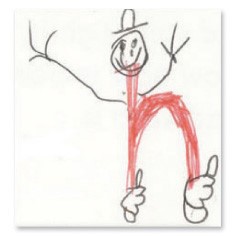
Letterland was created in 1968 on Lyn Wendon's kitchen table. Though a lot has changed with our stories and products since then, the same child-friendly teaching approach has remained a cornerstone of everything Letterland does.
We've made a brief recap of how Letterland was originated, with some insightful comments from Lyn herself.
‘The notion of a place called Letterland came about in the course of working with children with reading difficulties. It took its inspiration from all children’s natural affinity for stories, and from a concern to feed their incessant hunger to know “why?” My original aim was simply to create a series of “pictorial metaphors” to fuse some warmth and familiarity into the cold lines and curves of the alphabet shapes. A quick circle at the top of the h and feet at the ends of the bottom lines, some eye dots, a third dot and a line for nose and mouth, and our h became a human being. A quick head, beak and wings on the d turned her into a duck’
– Lyn Wendon
The first Letterland stories came from 7 and 8-year olds, when Lyn (who was a teacher at the time) found that she was often isolating particular words that were preventing students from understanding a sentence.
‘This fantasy place called Letterland was their solution, their route through the hieroglyphic barrier which stood between them and the messages in print'

Once the pictogram mnemonics were in the children’s minds, the letters effortlessly became a ‘real’ cat, duck, elephant, firefighter, etc. for as long as the children needed them. It was not necessary to use the animating details all the time, with the visual metaphors lingering on in their minds once they began looking at the alphabet shapes in this new light. Using this method, Lyn found a way to teach children phonics without memorising the barren phonic facts that so many children struggled with. From this point, Lyn (with the imaginative input of her students) reformulated all the rules of decoding and encoding into fable-like stories…
‘Each story provided a reason for facts which otherwise appear to children to be totally arbitrary.’
Children found it much easier to understand why Harry Hat Man always made a quiet ‘hhh’ sounds in words, once they knew he hhhated noise, or that he sometimes looked different (H) because when he starts an important word, like someone’s name, he is so hhhappy he does a hhhandstand with his hhhat on!
This continued to Lyn answering questions such as, “Why does Harry Hat Man make a different noise in words like she, ship, and shell?”, to which she could ask the children “Whenever Harry (who hhhates noise) finds Sammy Snake hissing right behind his back, what does he do?”. This put children in the position to provide the answer: “sh!”.

‘The Letterland reasons are sheer fantasy, but they carry the facts – and children of all abilities are intrigued by the two levels at which the stories operate. They are soon asking for more stories, unaware that they are in effect asking for more phonic facts, the very information they need to bond meaning into the meaningless units of language.’
Lyn created a teaching environment where children using the Letterland pictograms start to ‘live’ with the characters, and gain the ability to process those abstract black squiggles into familiar shapes.
‘As one child coming home from school one day suddenly exclaimed on looking over his father’s shoulder as he read his newspaper, “Hey, look, Dad! There’s my LETTERLAND in your newspaper!”’
As the Letterland approach evolved, it created a child-friendly way to communicate dry information through thinking and speaking in analogies. All of the teaching strategies that followed continued with an emphasis on providing context for learning information.
'Analogies are a powerful component of language. So is fantasy.'
Children in Letterland classes have repeatedly benefited from Lyn's innovative methods towards teaching language over the past fifty years, and we are proud to have aided thousands of young readers in using their imagination to learn!

If you'd like to hear more about us, check out the evolution of Harry Hat Man or read interview with a Letterland author, Lisa Holt.






















